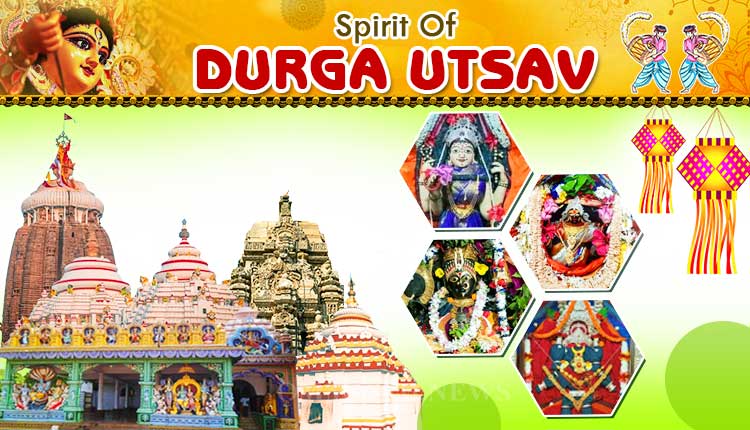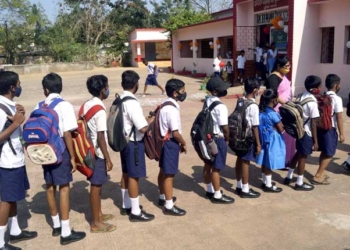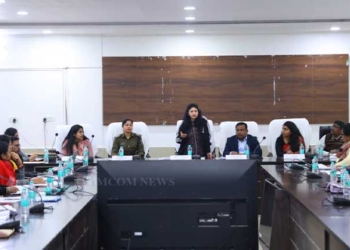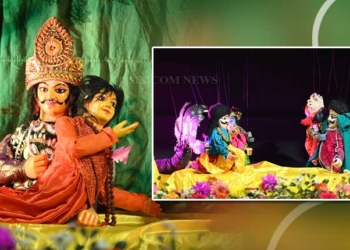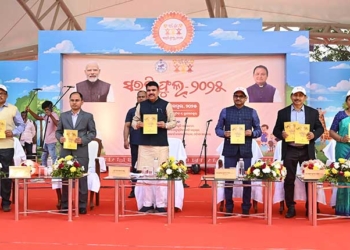The concept of prasad, or sacred temple offerings, often conjures images of vegetarian delicacies. However, a lesser-known aspect of India’s rich cultural tapestry reveals that select Shakti shrines do not follow this convention. Deep within Odisha’s heartland, where the sacred meets the mundane, lies a mystical world of Shakti worship. Here, the presiding deities are offered an unexpected token of devotion: non-vegetarian prasads. This intriguing custom, passed down through generations, weaves a rich tapestry of faith, culture, and community, revealing a lesser-known facet of state’s diverse spiritual heritage.
From fruits and sweets to poori and sabzi, prasads vary greatly. You will be surprised to know that in Odisha’s Shakti temples, non-veg bhoga is an integral part of worship. This unique tradition highlights the diversity of Odisha’s spiritual landscape, where faith blends with regional flavours. Devotees savour these sacred offerings, transcending culinary boundaries.
Since the Ramayan era, the revered Goddess Shakti, the embodiment of divine feminine power, has been worshipped across India. As the personification of creative energy, she is revered as the ultimate source of strength and inspiration. Goddess Shakti, the omnipotent deity, is believed to be the complete incarnation of Adi Shakti, the beginning and end of all existence.
During the auspicious Durga Puja festival, the nation comes together to venerate the different avatars of Goddess Durga, representing the diverse facets of Shakti’s power and grace.
On the occasion of Maha Sassthi, Ommcom News explores these extraordinary Shakti shrines and discovers the fascinating stories behind their non-vegetarian prasads, a testament to Odisha’s rich cultural heritage.
Maa Mangala Temple
Nestled on the eastern bank of the sacred River Prachi, once revered as Saraswati, lies the revered Maa Mangala temple in Kakatpur. This ancient Shakti Peeth is distinguished for its unique offerings during the Sodasa Upachara puja, lasting from Mulastami to Mahastami. During this period, a special offering of fish fry is made to Goddess Durga, whose idol is reverently placed beneath Maa Mangala’s.
Interestingly, the fish fry is not offered to Maa Mangala but to Goddess Durga, symbolizing the powerful feminine energy. Additionally, the offering is made outside the temple’s sanctum, adhering to traditional customs.

Explaining more about fish fry offering temple servitor Samarendra Dixit, said, “During this festive period, countless devotees flock to Maa Mangala’s temple. This auspicious time allows devotees to witness various majestic beshas of Maa Mangala. During Navapatrika, devotees pay homage to Maa’s different forms. On Vijaya Dashami, devotees celebrate the culmination of Navapatrika with Haradurga’s visit to Swameshwar temple.”
“During the sodasa upachara puja, a unique tradition of offering non-vegetarian bhog (fish fry) to Goddess Durga, placed below Maa Mangala’s idol, is performed from Mulastami to Mahastami. During this period, Supakara servitors prepare fish fry in the temple’s kitchen and the offerings are made to Goddess Durga following which devotees partake of the Prasad. Devotees from far and wide flock to experience this sacred tradition and savour the blessed non-vegetarian prasad to get their desires fulfilled”, maintained Dixit.
Maa Bimala Temple
Within the revered Jagannath Temple in Puri resides Goddess Bimala, the consort of Lord Jagannath. While Jagannath is a strict vegetarian, Goddess Bimala uniquely receives non-vegetarian offerings once a year.
Normally, Goddess Bimala survives on the remnants (Ucchishta) of Jagannatha’s vegetarian meals, which become Mahaprasad after being sanctified. However, during Durga Puja, separate non-vegetarian dishes are prepared exclusively for Goddess Bimala. This exception is rooted in mythology.
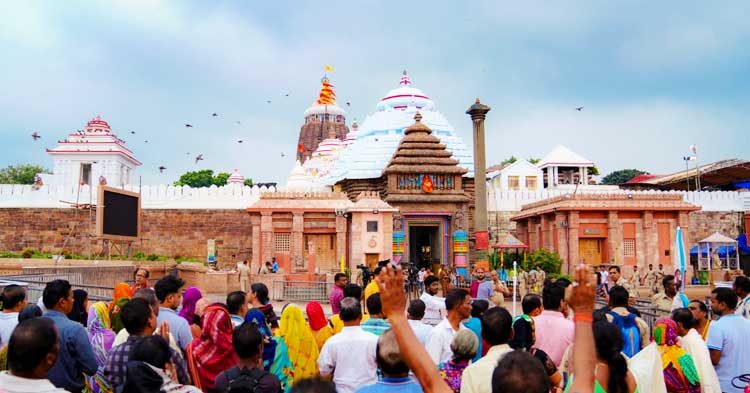
Talking about the practice, temple servitor and Odissi exponent Kumar Bhimsen said, “Once Lord Shiva visited Lord Vishnu in Baikunta and swallowed a fallen grain of Ucchishta (leftover food). Narada ate another grain stuck to Shiva’s beard, angering Parvati, who felt she should have received it as Shiva’s consort. Vishnu pacified her, promising that in the Kali Yuga, she would reside at Puri as Vimala and receive Jagannatha’s meal remnants daily.”
“During Durga Puja, Goddess Bimala receives distinctive offerings. Fish from the sacred Markanda temple tank is cooked and presented to her, accompanied by a sacrificial offering of a he goat, slaughtered before dawn. Both offerings are then prepared and offered to the goddess. Interestingly, these rituals take place before the main doors of Lord Jagannath’s temple are opened”, stated the servitor.
Maa Charchika Temple
Situated in Banki in Cuttack district, the ancient Maa Charchika temple is one of the oldest Shakti Peeths, housing the presiding deity, Goddess Chamunda. Locally revered as Maa Charchika Devi, she is depicted with eight arms, seated on a prostrate human body and adorned with a garland of human skulls.
This temple stands out for its distinctive non-vegetarian offerings to the Goddess. Sudhir Kumar Rana, a servitor, shares that the Sodasa Upachara puja, spanning 16 days from Mulasthami to Mahastami, is a significant event.
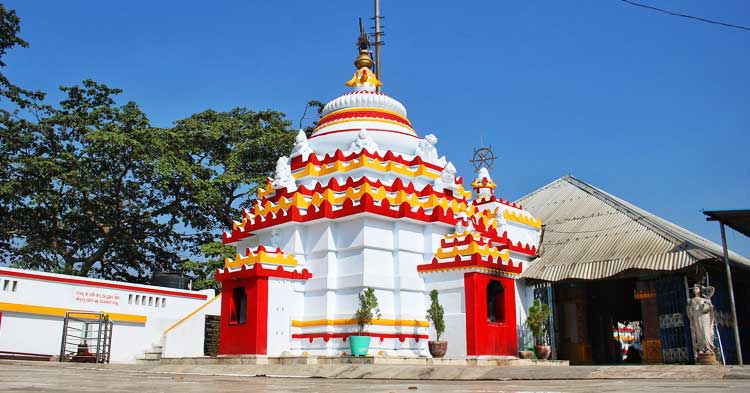
During this period Mandua pitha bhoga is offered to the Goddess in Sakala dhupa while fish bhoga (fish fry) is offered, accompanied by khechudi, dalma, saga and khata in dwitiya dhupa.
It is pertinent to mention that fish fry is the Goddess’s signature Prasad being offered almost throughout the year.
Bhattarika Temple
Located in Sasanga village near Badamba at Athgarh, the revered Bhattarika Temple is a significant Shakti shrine. This ancient temple, dating back to the 6th-16th century BC, is believed to have been founded by the legendary Parshurama.
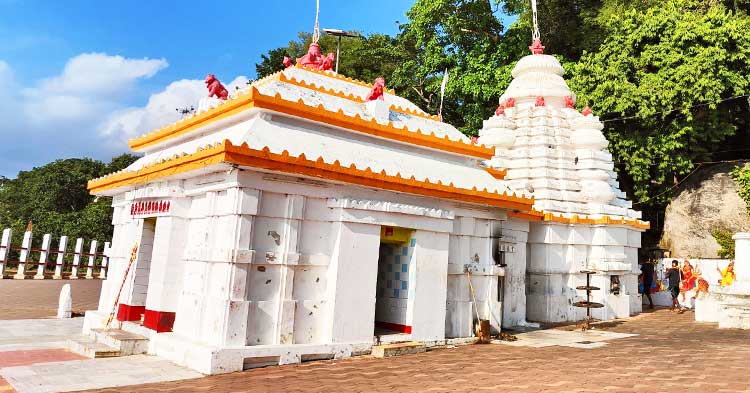
Unlike traditional Hindu temples, the Bhattarika Temple stands out for its distinctive Dusshera rituals, where non-Brahmin priests offer cooked fish to the goddess. This practice has made the temple a sacred haven for fishermen, who revere Goddess Bhattarika as their deity of navigation and protection. Interestingly, non-vegetarian offerings are made to the presiding deity frequently, beyond just Dusshera celebrations.
According to myth, Parshurama, seeking redemption after battles against Saharasjuna, worshipped Goddess Durga and gained divine powers. With his arrow, he carved the idol of Goddess Bhattarika, establishing her as a powerful Shakti Pitha.
Ugratara Temple
Goddess Ugratara, the presiding deity of the historic fort of Mulajhargarh, is revered for her dual nature – fierce and benevolent. The temple is located between Rameswar Chowk and Chandpur under Tangi block in Khurda district on National Highway 5.
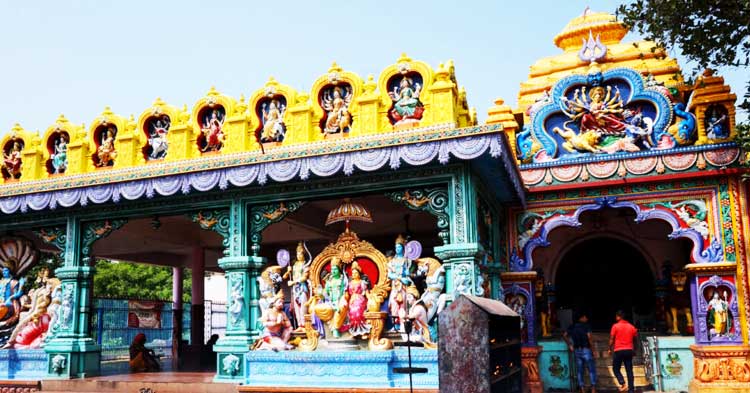
Ugratara is worshipped as a powerful symbol of feminine energy. Her fearsome appearance has earned her the name Ugratara, yet she remains benevolent to her devotees.
The goddess is offered poda machha (roasted fish) and chuda ghasa daily, showcasing the unique blend of vegetarian and non-vegetarian offerings. Apart from fish fry, the presiding deity is offered Jhada Besara curry (a type of fish curry) during Dussehra.
Barahi Temple
The 9th-century Barahi Temple at Chaurasi in Puri district is an architectural gem showcasing exceptional artistry. Inside, the presiding deity, Matsya Varahi, is revered for her striking image: a boar-faced, divine woman’s body, holding a fish and skullcap in her right and left hands.
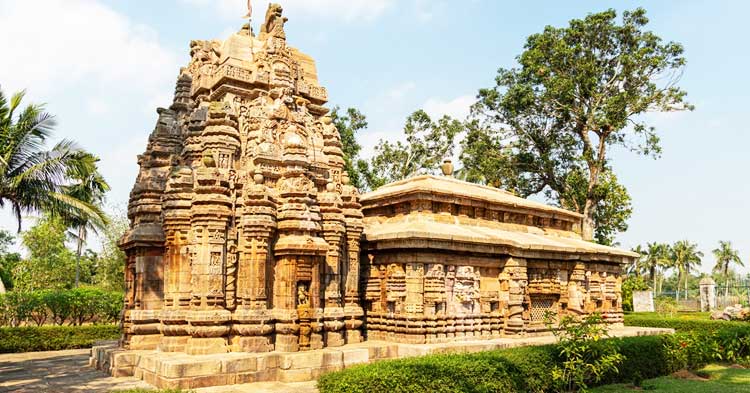
Seated on a pedestal with her right foot on a buffalo, she boasts a third eye and spiral-coiled hair. Her imposing belly symbolizes holding the universe within her womb. Following tantric rituals, Matsya Varahi is worshipped daily with fish offerings and especially honoured during Durga Puja with fish bhog by devotees.
By Rashmi Rekha Das




